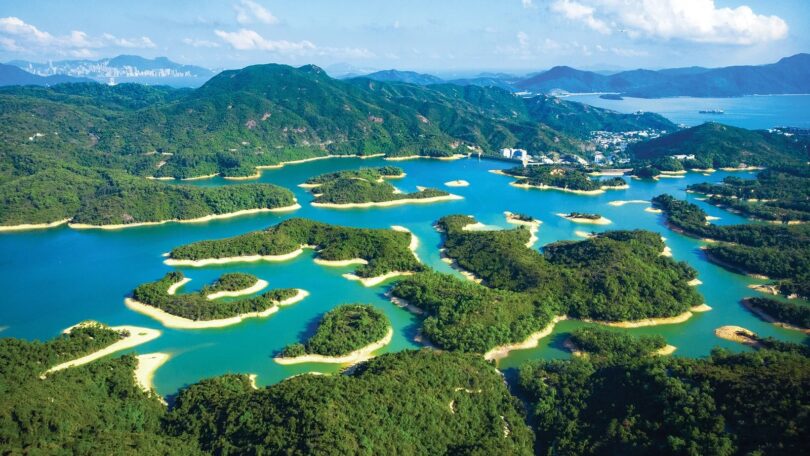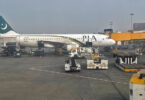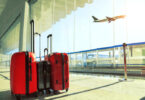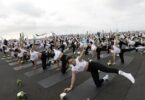Chris Dwyer
Hong Kong is famously one of the world’s most densely populated cities, with an average of 6,700 people per square kilometre, rising to an eye-watering 57,000 in the busiest districts.
But beyond the bright lights and skyscraper-filled skyline, what comes as a surprise to many visitors is the fact that some 40% of the territory is made up of country parks.
Consequently, there’s a remarkable diversity of landscapes – and seascapes – across Hong Kong’s 263 islands, allowing locals and visitors the chance to truly get away from it all in the great outdoors. From woodland to wetlands, grasslands to mountains – not to mention beaches attracting big wave-seeking surfers – there’s something for every level of fitness, experience and enthusiasm.
Someone who has explored more of the city than almost anyone is athlete and water sports coach Edmund Lai.
“I’ve been doing water sports all my life. My uncle used to represent Hong Kong in kayaking, so when I was a kid, he took me out for sunrise kayaking, paddling to different beaches. He’d get water from the mountain and cook pasta and make milk tea for breakfast.”
“I realised that I could go anywhere I want – I love that kind of lifestyle. I started working in a water sports club, then my cousin bought one of the first stand up paddleboards (SUP) to Hong Kong and I realised it was even more fun. In clear water, you can see the bottom of the ocean. I’ve been teaching SUP for 10 years now – it’s a fun, fun job.”
Here Lai shares five of his favourite places and experiences in Hong Kong to get away from the crowds and connect with nature.
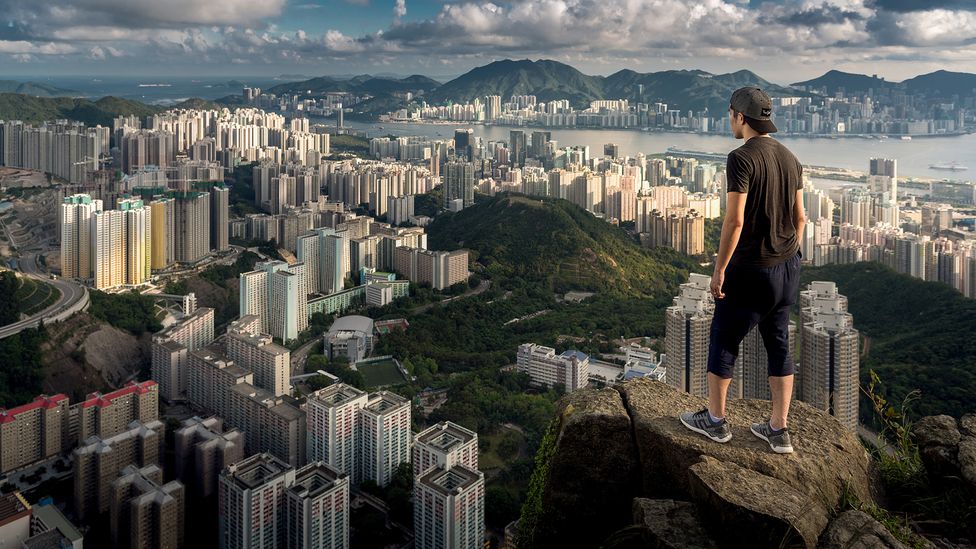
At 600m high, Kowloon Peak offers breath-taking views over Hong Kong (Credit: Chan Srithaweeporn/Getty Images)
1. Best for dramatic views: Fei Ngo Shan
At 600m and located in Ma On Shan Country Park, Fei Ngo Shan means “soaring goose mountain” in Cantonese – and is known somewhat less poetically in English as Kowloon Peak.
The dramatic peak with iconic views is one of 134 mountains soaring more than 300m high across Hong Kong, a figure that explains why hiking is so popular. Hong Kong is also criss-crossed by hundreds of kilometres of hiking trails of varying difficulties, making it a beloved weekend pastime for those wanting to escape the city.
“I love going hiking through the hills, to different beaches and for night hikes to check out the views of Hong Kong,” Lai explained. “Sometimes I hike up Fei Ngo Shan and just stay for a couple of hours around sunset, from about 18:00 to 19:45 in summer. You can see the whole transition of light across Hong Kong, the skies turning dark with the stars coming out, and skyscrapers turning their lights on.”
Although the trail to Fei Ngo Shan is easily accessible from the MTR (metro) stop, it’s still a fairly demanding hike. It takes around three hours from Fei Ngo Shan Road, taking in hundreds of steps followed by steep, rocky hillside in the last section. Lai, however, thinks it is well worth the effort. “It’s peaceful walking up and the reward is that you can see the whole of Hong Kong Island. I just sit, meditate and relax.”
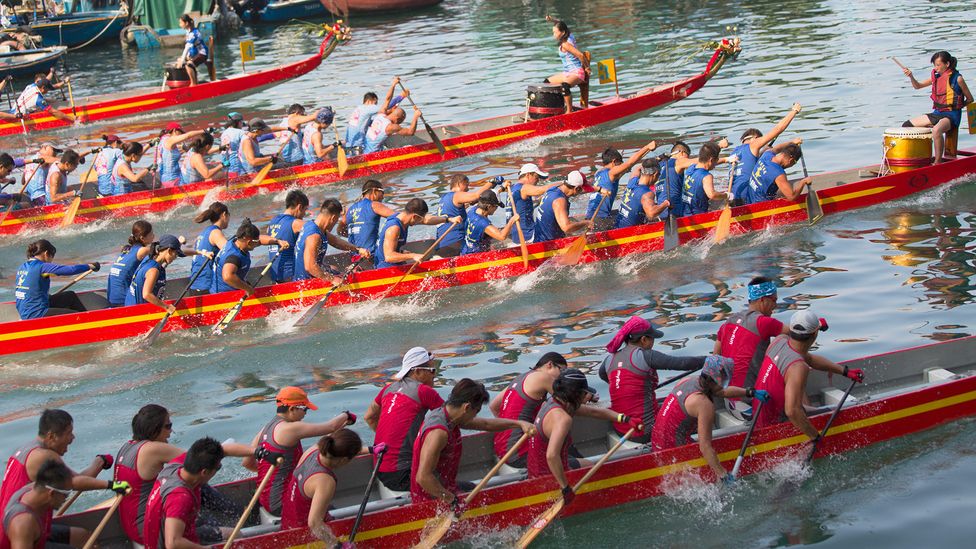
The Dragon Boat Festival takes place on the fifth day of the fifth lunar month each year (Credit: robertharding/Alamy)
2. Best for dragon boat racing: Sai Kung
A vibrant, noisy and frenetic sport, dragon boat racing dates back more than two millennia. There are multiple stories explaining how dragon boating started, but it’s generally accepted that it has its origins in southern China as a ritual to bring fertility and good luck during harvest season.
An added layer of history came with the 3rd Century BC poet and warrior Qu Yuan, who drowned himself in the Miluo River in China’s Hunan Province as a protest against corruption. Locals tried to save him by racing out, beating drums and splashing water to keep away the dragons that they said lived there.
Lai works in Sai Kung in north-east Hong Kong, a verdant district that is home to country parks and an eponymous peninsula with some of Hong Kong’s clearest seas. It’s also a favourite spot for dragon boating, thanks to generally calm waters and an annual dragon boat festival. Known in Cantonese as Tuen Ng, this public holiday falls on the fifth day of the fifth lunar month, generally in late May or early June.
“This is a beloved Hong Kong Chinese pastime. If you like teamwork in sports, it’s great to work together so you can fully feel the whole team spirit thing. Whenever there’s a race there’s the drums, the colour, everyone’s getting into it,” said Lai.
Each long, narrow craft is emblazoned with a colourful carved dragon, and up to 16 paddlers work together, following the rhythm set by a drummer at the front.
“You can have more than 100 teams in different racing zones, with tens of thousands of people watching from the shore, piers and on other boats. Just a very good festival vibe. To race, to maybe win a prize – it’s really fun and seriously exciting.”
In his work at Blue Sky Sports Club in Sai Kung district, Lai allows visitors to get a feel for dragon boat racing by taking to the water and improving their paddling skills, physical ability and teamwork.
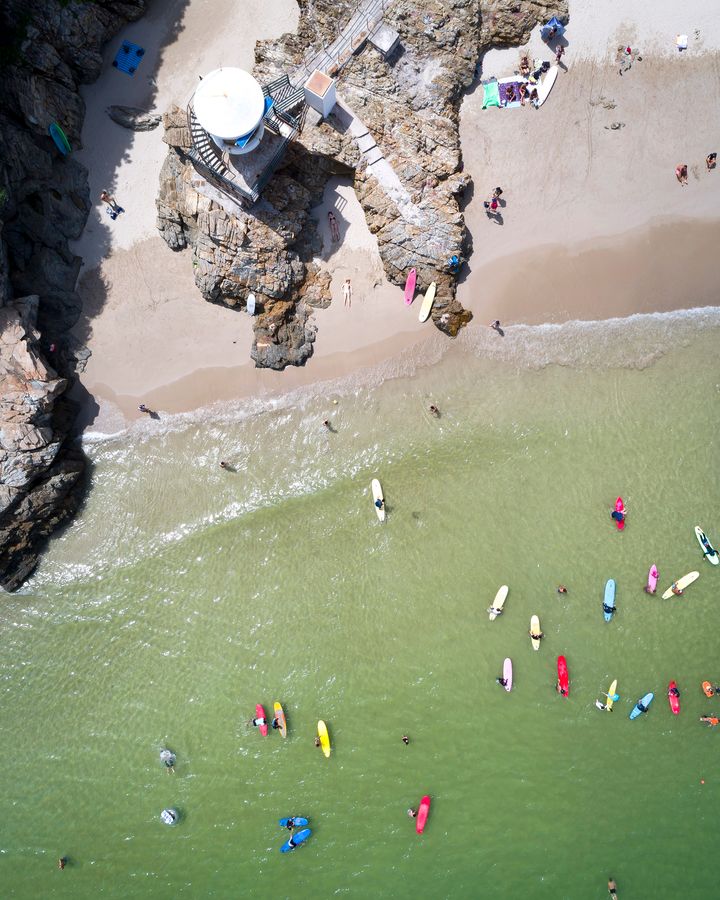
Tai Long Wan means “Big Wave Bay” in English, which explains why it’s a magnet for surfers (Credit: Tugo Cheng/HKTB)
3. Best for beach hikes: Tai Long Wan
Another of Lai’s favourite Hong Kong hiking trails has a very different feel to Kowloon Peak. Tai Long Wan is a beautiful 3km stretch of sandy beaches on the east coast of the Sai Kung peninsula. With crystal clear waters and easy accessibility, it’s a magnet for people wanting to escape the city.
“I think this is one of the best hiking trails in Hong Kong. Whenever my mates come and visit me, I take them there because you can hop around and hike to two or three different beaches,” Lai explained.
Starting from Sai Wan Pavilion in Sai Kung, the 4.5km hike takes you through gorgeous forest-covered hills before reaching the beaches. But you’ll also need to hike back out the way you came unless you can nab a seat on one of the occasional boats that brave the waves to come and pick up weary hikers. In fact, the Cantonese name Tai Long Wan means “Big Wave Bay” in English, which explains why it’s also a magnet for surfers. “In autumn and winter, the waves are perfect,” said Lai.
He added: “The whole hike, if you take photos and just take it slow, would take about four hours. But go for the day or for a weekend getaway – it doesn’t feel like Hong Kong; it’s a vibe that expats love.”
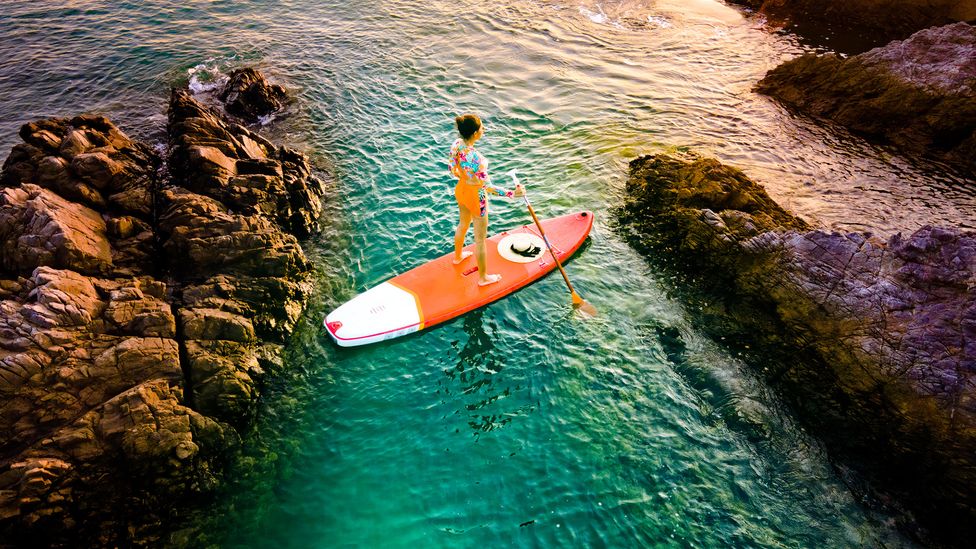
Lai recommends stand up paddleboarding as a way to explore Hong Kong’s diverse landscapes (Credit: Patchareeporn Sakoolchai/Getty Images)
4. Best for stand up paddle boarding: Green Egg Island
It’s no surprise that stand up paddleboarding is on Lai’s list. One of the first to embrace the sport in Hong Kong, he teaches all ages and shows them Hong Kong’s remarkable diversity of landscapes in the process.
“I want to tell stressed-out people from Hong Kong that they can get out of the concrete zone and get in sync with Mother Nature. You can absorb her energy, just to make you feel calmer and more relaxed,” he said.
Lai encourages groups to take it slow and make the most of their time, meaning a minimum of a half day to get out and back. One destination he loves is Green Egg Island, which sits just off the coast of Clearwater Bay. Here, paddlers will be rewarded with sights including migratory birds and sea caves – and have the occasional turtle for company, if they’re lucky.
Whether it’s families with kids, couples or corporate groups for outings and camps, Lai endeavours to always include special moments, such as sunrise and sunset. That means an early start.
“Sunrise is 06:00, so we usually we usually get people out an hour earlier. That way, you don’t only see sunrise, you see the whole light transition, from stars and the Moon slowly changing colour across a 270-degree view. Once the Sun’s fully out, we do some drills and hop to different beaches.
And he says it’s a sport that anyone can try. “Whenever it’s not windy, it’s quite easy to pick up. But later on, if you want to go paddle around, go out to the open ocean, that obviously will require more skill and balance.”
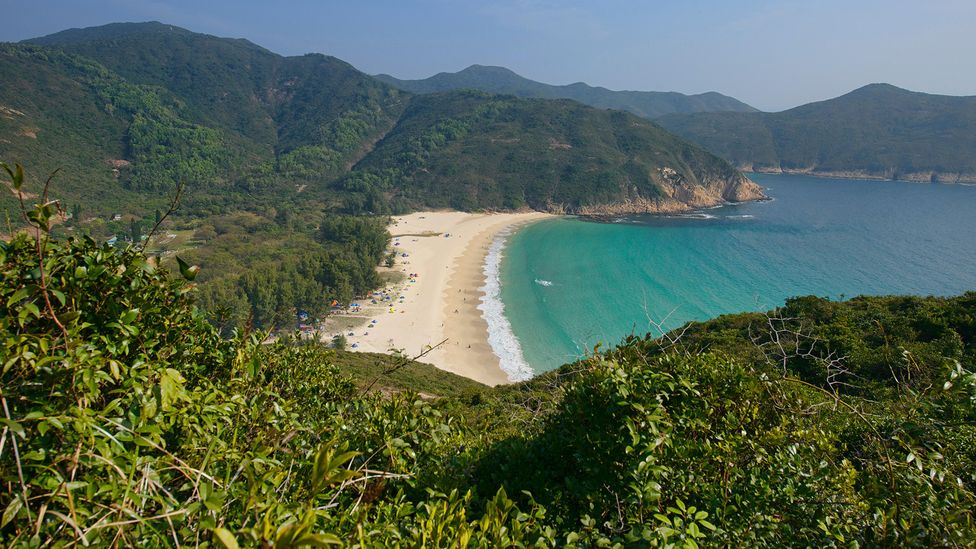
The most exciting way to get to Long Ke Wan is a 12km night hike from Pak Tam Chung (Credit: agefotostock/Alamy)
5. Best for secluded camping: Long Ke Wan
Hong Kong has dozens of camping grounds, but few can match Long Ke Wan. That’s thanks to the (usually) crystal-clear water and white sand of its tranquil, secluded beach location that overlooks the South China Sea.
By far the easiest way to get there is by speedboat from Sai Kung Pier, where a number of operators vie for business along the promenade. The ride takes around 30 minutes, but it can get pretty bumpy if the water is choppy.
Lai, however, prefers a much tougher way to get there, namely a 12km night hike from Pak Tam Chung that traverses the west and east dams on the High Island Reservoir.
“Sometimes you’ll see wild boar, then there’s also usually no light pollution up there, so when you look up, you’ll see tons of stars – and if you’re lucky, shooting stars,” he said.
Once he arrives, Lai sets up camp – but only in autumn or winter, given the summer’s punishing heat and humidity. Given the challenge of getting there, there are usually very few visitors, making it a perfect to spot to relax and take it all in.
Note: there’s no public toilet, shop or restaurant at Long Ke Wan, but the speedboat operators sell drinks and snacks, and there’s an open-air toilet on the campsite.
Courtesy: BBC

